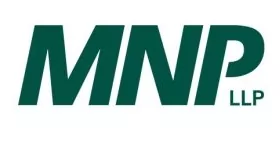Over the last decade the federal government has introduced legislation allowing medical doctors in Canada to incorporate. Many have followed suit to take advantage of the tax planning, financial incentives and savings through lower corporate income tax rates, the small business deduction, income splitting, income tax deferral and the lifetime capital gains exemption. Another, not widely discussed benefit is related to tax credits available through the government-sponsored Scientific Research & Experimental Development (SR&ED) program, designed to promote R&D for Canadian corporations.
Corporate tax incentives for Canadian companies that partake in R&D have been around in some form since World War II, with a mandate to encourage businesses of all sizes to conduct research. Despite this, the medical research community – which may arguably be our most research intensive sector – has largely not taken advantage of programs such as SR&ED. This is, in part, due to the administrative burden and complexity of making a SR&ED claim which has deterred many potential claimants in the biomedical and health niches. Medical doctors who conduct research are an eclectic bunch from the perspective of a tax preparer, due to their relationships with universities, hospitals, biotechnology and pharmaceutical companies, thus leading to claim complexities. Due to the broad scope of medical research – which can vary from qualitative, community-based health impact studies to basic or applied R&D – determining which aspects of a medical research project are eligible can also be challenging.
In Canada, over $3 billion dollars are distributed annually through the SR&ED program to approximately 23,000 Canadian companies conducting research. Given the shrinking pool of grant funding, this provides an attractive source of money to tap into. There are a couple of key differences that set the SR&ED program apart. Unlike grant funding, distribution of SR&ED funds are dependent on systematic investigation being undertaken and success, failure or completion of a project lays no bearing on the tax credit and / or refunds awarded. Another difference is that SR&ED is backwards-looking and is applied for within 18 months of a corporation's year end for research that was already conducted. The types of expenditures which qualify include wages, materials, overhead and research-related third-party contract payments.
Your claim should ideally be put together by a team of outside individuals, consisting of experts in the technical and / or financial aspects of the claim. This strategy minimizes the time a claimant needs to spend in preparing the claim, putting it in the hands of those who understand how to efficiently construct a claim while guiding you through the CRA review process
The content of this article is intended to provide a general guide to the subject matter. Specialist advice should be sought about your specific circumstances.

